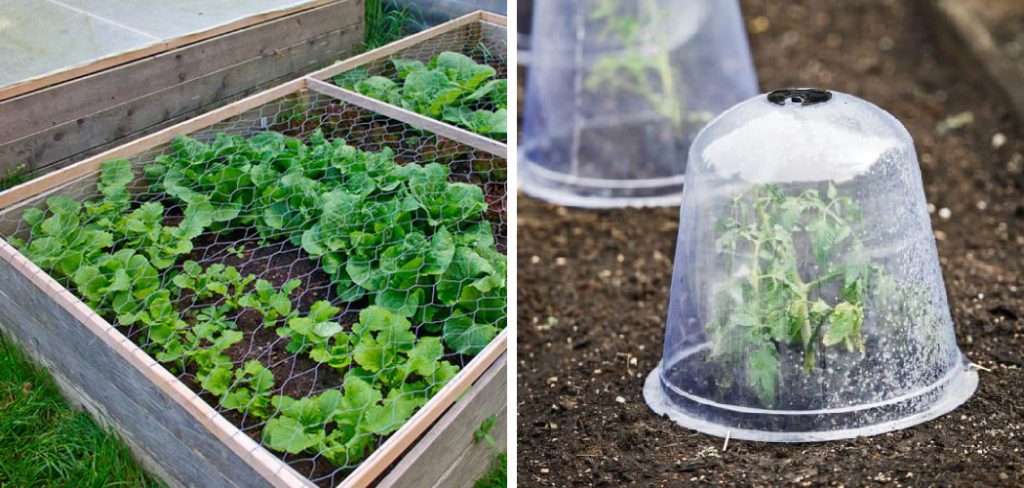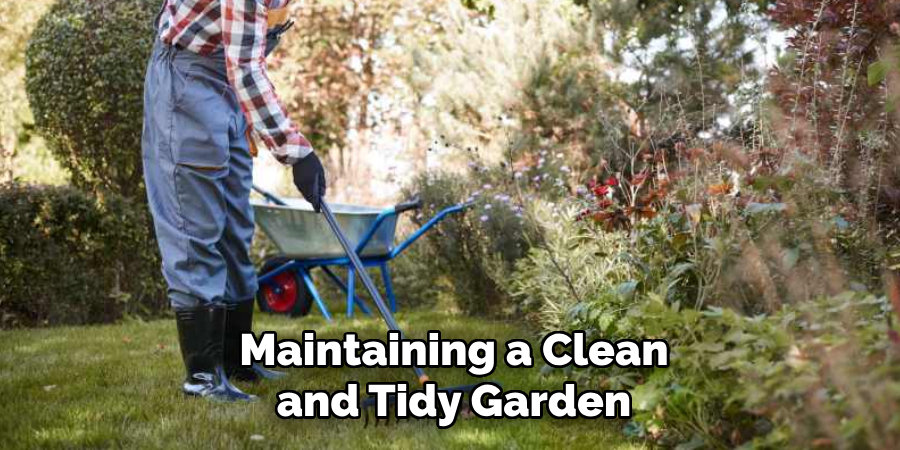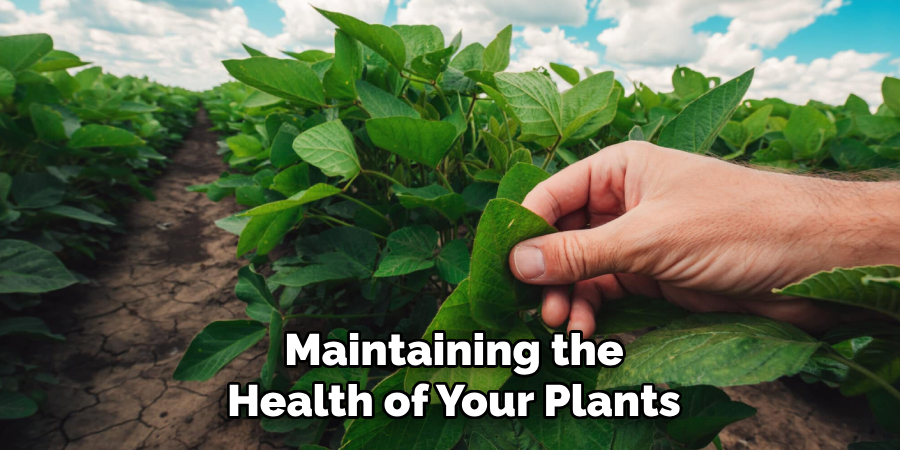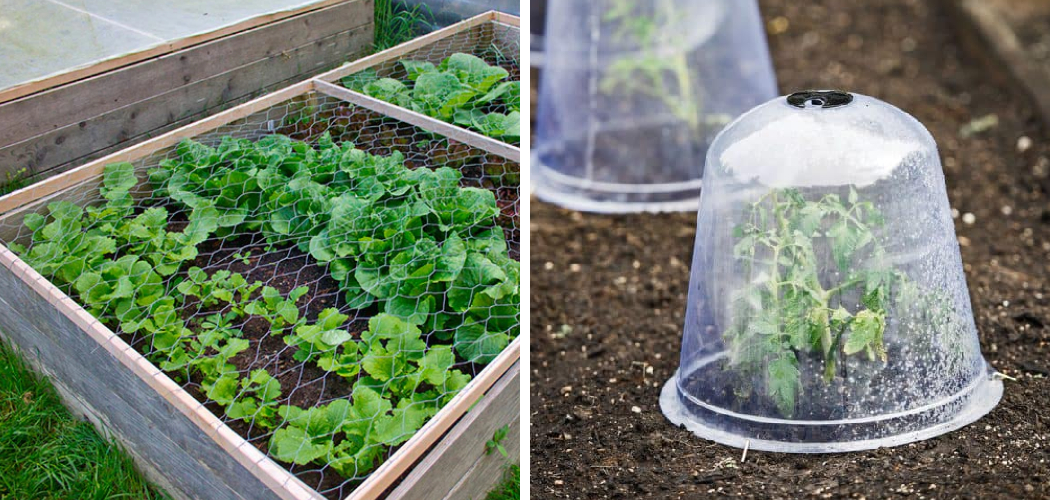To protect seedlings from pests, use physical barriers like netting or row covers and consider companion planting with pest-repellent plants. Seedlings are vulnerable to damage from various pests, including insects, rodents, and birds.
Protecting them is crucial for their healthy growth and development. Fortunately, there are several effective methods to safeguard seedlings from pests. Physical barriers like netting or row covers can create a protective shield against insects and larger pests. Another approach is companion planting, where you strategically grow pest-repellent plants alongside your seedlings.
This helps deter pests by masking the smell or attracting beneficial insects that prey on pests. Implementing these techniques can greatly increase your seedlings’ chances of surviving and thriving, allowing you to enjoy a bountiful harvest.

Importance Of Protecting Seedlings From Pests
Protecting seedlings from pests is essential for their healthy growth. Seedlings are particularly vulnerable to pests due to their delicate nature. Pest damage can have a significant impact on the development of seedlings. By safeguarding these plants from pests, we can ensure their survival and attainment of optimal growth.
Various pests, such as insects and rodents, can destroy seedlings by feeding on their leaves, stems, or even roots. This damage can stunt the growth of seedlings and lead to long-term consequences for their overall development. Implementing preventive measures, such as using natural repellents or physical barriers, can effectively deter pests and protect seedlings.
Proper care and attention to pest control will promote robust growth and increase the chances of successful plant establishment. By taking proactive steps to protect seedlings from pests, we can create the optimal conditions for their growth and ensure the long-term health and vitality of our plants.
Identifying Common Pests That Affect Seedlings
Seedlings are vulnerable to various pests that can damage and hinder their growth. Identifying these common pests is crucial in protecting seedlings effectively. There are several types of pests that specifically target seedlings, including aphids, caterpillars, slugs, snails, and mites.
Each of these pests can cause significant damage, stunting the growth of seedlings or even killing them. To determine if your seedlings have been affected by pests, look out for signs such as holes in leaves, wilting, discoloration, or distorted growth.
Taking proactive measures, such as regularly inspecting your seedlings, maintaining good garden hygiene, and using organic pest control methods, can help protect them from these pesky intruders. By being attentive and implementing preventive measures, you can ensure the health and success of your seedlings.
How to Protect Seedlings from Pests: Step by Step Guide
Organic Methods To Protect Seedlings From Pests
Protecting seedlings from pests can be done using organic methods such as companion planting. By strategically placing pest-repellent plants near seedlings, pests can be deterred. Another effective approach is to encourage natural predators like ladybugs and spiders, as they help control pest populations.
Additionally, homemade pest repellents made with ingredients like garlic, chili powder, and neem oil can be sprayed on seedlings to ward off pests. These methods not only protect seedlings but also promote natural and sustainable gardening practices. With these organic strategies, gardeners can ensure that their seedlings remain healthy and free from pest infestation.
Chemical Options For Protecting Seedlings From Pests
Protecting seedlings from pests is crucial for a successful garden. To keep these pests at bay, chemical insecticides are often used. It is important to choose safe and effective options for seedlings. Proper application techniques are also necessary for successful results.
These insecticides should be applied carefully and according to the instructions provided. By using these chemical treatments correctly, seedlings can be protected from harmful pests and ensure healthy growth. It is recommended to research and select insecticides that are specifically designed for seedlings.
This will help minimize any potential harm to the plants while effectively combating pests. Taking these precautions will help safeguard your seedlings and ensure a thriving garden.
Preventive Measures To Avoid Pest Infestations
Preventive measures play a crucial role in safeguarding seedlings from pest infestations. Maintaining a clean and tidy garden is essential to minimize chances of attracting pests. Regular inspection of plants helps in early detection of pests, preventing further damage. Additionally, practicing crop rotation reduces the risk of pest recurrence, as different crops attract different pests.

By implementing these measures, you can effectively protect your seedlings from pests and ensure a healthy garden. Remember, cleanliness, inspection, and rotation are key to successful pest prevention. So, keep your garden spotless, regularly examine your plants, and rotate your crops for a thriving and pest-free garden.
Best Practices For Protecting Seedlings In Different Growing Environments
Protecting seedlings from pests is crucial for their healthy growth in different growing environments. When it comes to indoor seedlings, implementing pest control tips is essential. For outdoor seedlings in open gardens, dealing with pests becomes a priority. In a controlled greenhouse environment, managing pests is necessary to safeguard the seedlings.
To ensure effective protection, it is important to be aware of the specific challenges each growing environment presents. Taking proactive measures such as regularly inspecting the seedlings, implementing natural pest repellents, and maintaining cleanliness in the surroundings can help prevent pest infestation.
Furthermore, proper ventilation and ensuring adequate spacing between plants can reduce the risk of pests spreading amongst seedlings. By adopting these best practices, seedlings can flourish and thrive, free from the harmful impact of pests. Protecting our seedlings is a vital part of successful gardening and plays a significant role in ensuring a bountiful harvest.
Tips For Integrating Pest Control Into Your Gardening Routine
Protecting seedlings from pests is essential for a healthy garden. Integrating pest control into your gardening routine is a smart approach. One tip is to create a pest management plan. Take time to monitor the seedlings regularly for any signs of pest activity.
This will help you identify problems early. Adjust your pest control methods based on the growth stages of your plants. As the seedlings grow, their needs change, so it’s important to adapt your strategies accordingly. By being proactive and attentive, you can prevent pests from damaging your seedlings and enjoy a thriving garden.
Remember to regularly assess and update your pest management plan to ensure long-term success.
Importance Of Maintaining Plant Health To Prevent Pest Attacks
Maintaining the health of your plants is crucial for preventing pests. By ensuring that seedlings receive adequate nutrients and water, you can create an environment that discourages pest attacks. Additionally, minimizing stress factors on the seedlings, such as extreme weather conditions or improper handling, can help strengthen their defenses against pests.

Promoting strong and healthy growth in your seedlings through proper care and attention will also make them less susceptible to pest infestations. Regularly inspecting the plants for any signs of pests or damage allows for early detection and intervention. Implementing organic pest control methods, such as companion planting or using natural predators, can also aid in protecting seedlings from pests.
Keeping your plants healthy and robust is the key to safeguarding them from destructive pests.
Responding To Pest Infestations In Seedlings
Responding to pest infestations in seedlings can be crucial to protect them from further harm. When pests are discovered, taking immediate action is necessary. Firstly, identify the specific pests affecting the seedlings. Next, thoroughly clean the affected area, removing any debris and damaged plants.
Consider using organic pest control methods, such as introducing beneficial insects or using homemade remedies like neem oil or garlic spray. Additionally, practicing good gardening practices like proper watering and fertilizing can help strengthen the seedlings’ resilience against pests. Regularly monitor the affected area for any signs of reinfestation and take preventive measures.
Remember to maintain a clean and healthy garden environment, as it can discourage pests from infesting the seedlings again. By following these steps, you can effectively combat severe pest infestations and protect your valuable seedlings.
Frequently Asked Questions Of How To Protect Seedlings From Pests
How Do I Protect Seedlings From Pests?
To protect seedlings from pests, you can try using natural remedies like garlic spray or neem oil. Creating physical barriers with netting or row covers can also help. It’s important to regularly inspect your plants for signs of pests and take action immediately if they are detected.
Additionally, practicing good garden hygiene and removing any debris or weeds can reduce pest populations.
Conclusion
Protecting seedlings from pests is a vital part of successful gardening. By implementing the strategies discussed in this blog post, you can shield your delicate seedlings from potential harm. Incorporating natural pest control methods, such as companion planting, will help to deter pests without the need for harsh chemicals.
Planting in raised beds or containers can limit access to pests and enable better control. Regularly inspecting your plants for signs of pests and promptly addressing any issues can prevent infestations from escalating. Additionally, practicing good garden hygiene, such as removing debris and weeds, will eliminate hiding places for pests.
Remember, prevention is key, so implementing these techniques from the beginning stages of your seedlings’ growth will set them up for success. With a little care and attention, your seedlings will thrive and produce bountiful harvests. Happy gardening!

